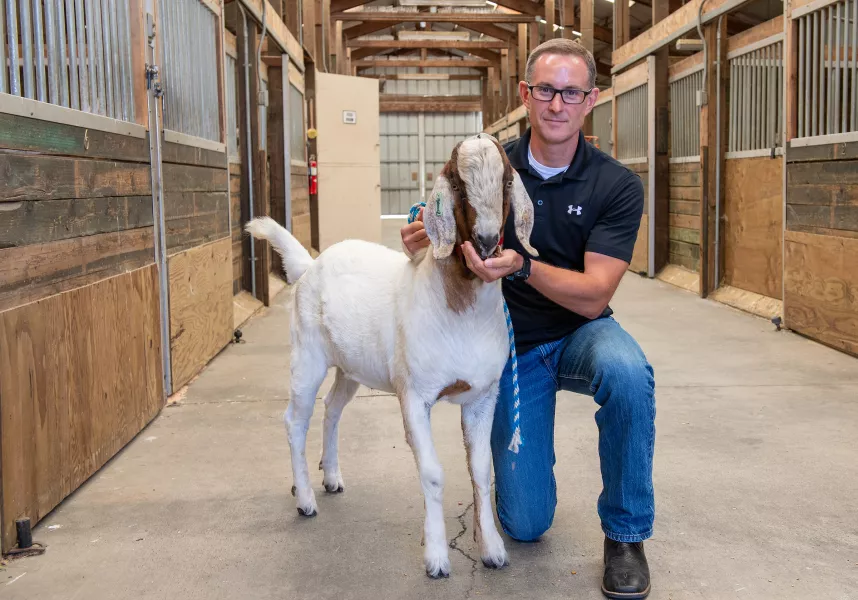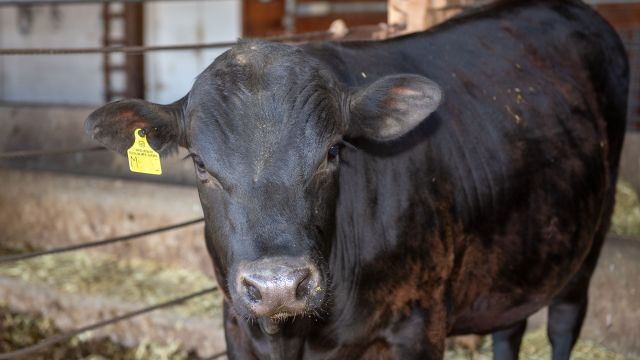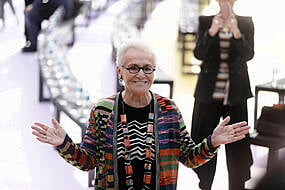Researchers say the development could speed up the spread of desirable characteristics in livestock and improve food production for a growing global population.
Additionally, it would give breeders in remote regions better access to genetic material of elite animals from other parts of the world.
It would allow more precision breeding in animals such as goats where using artificial insemination is difficult.
Jon Oatley, a reproductive biologist with Washington State University’s College of Veterinary Medicine, said: “With this technology, we can get better dissemination of desirable traits and improve the efficiency of food production.
“This can have a major impact on addressing food insecurity around the world.
“If we can tackle this genetically, then that means less water, less feed and fewer antibiotics we have to put into the animals.”

Scientists used the gene editing tool CRISPR-Cas9, to knock out a gene specific to male fertility in the animal embryos that would be raised to become surrogate sires.
Although the male animals were born sterile, they began producing sperm after researchers transplanted stem cells from donor animals into their testes.
The sperm the surrogate sires produced only carried the genetic material of the selected donor animals.
The gene-editing process employed in the study published in the Proceedings of the National Academy of Sciences journal seeks to bring about changes within an animal species that could occur naturally, such as infertility.
The study is the result of six years of collaborative work among researchers at WSU, Utah State University, University of Maryland and the Roslin Institute at the University of Edinburgh.
The researchers used CRISPR-Cas9 to produce mice, pigs, goats and cattle that lacked a gene called NANOS2 which is specific to male fertility.
The male animals grew up sterile but otherwise healthy.
This shows the world that this technology is real. It can be used
After they received transplanted sperm-producing stem cells from other animals, they started producing sperm derived from the donor’s cells.
The surrogate sires were confirmed to have active donor sperm.
In the study the surrogate mice fathered healthy offspring who carried the genes of the donor mice.
However, the larger animals have not been bred yet, and Prof Oatley’s lab is refining the stem cell transplantation process before taking that next step.
Professor Bruce Whitelaw of the Roslin Institute said the study provides a powerful proof of concept.
He added: “This shows the world that this technology is real. It can be used.
“We now have to go in and work out how best to use it productively to help feed our growing population.”
Scientists have been searching for a way to create to overcome the limitations of selective breeding and artificial insemination, tools which require either animal proximity or strict control of their movement.
In many cases they require both.
Researchers say the surrogate sire technology could solve these issues as the surrogates deliver the donor genetic material through normal reproduction.
This allows ranchers and herders to let their animals interact normally on the range or field.
The study also sets out that donors and surrogates do not need to be near each other since either frozen donor sperm or the surrogate animal itself can be shipped to different places.
Further, female NANOS2 knockout animals remain fertile, since the gene only affects male fertility, and could be bred to efficiently generate sterile males to be used as surrogate sires
The technology has the potential to help food supply in the developing world, where herders still have to rely on selective breeding to improve their stock, said Irina Polejaeva, a professor at Utah State University.
She explained: “Goats are the number one source of protein in a lot of developing countries.
“This technology could allow faster dissemination of specific traits in goats, whether it’s disease resistance, greater heat tolerance or better meat quality.”
According to the researchers, the surrogate sires technology could also open up a new option for genetic conservation of endangered species, whose dwindling numbers leave animal communities isolated from each other, limiting their genetic diversity.
But they recognise that a lot of work needs to be done outside the lab before the modifications can be made to the animals.
Prof Oatley said: “Even if all science is finished, the speed at which this can be put into action in livestock production anywhere in the world is going to be influenced by societal acceptance and federal policy.
“By working with policymakers and the public, we can help to provide information assuring the public that this science does not carry the risks that other methods do.”







